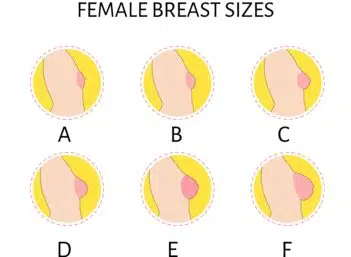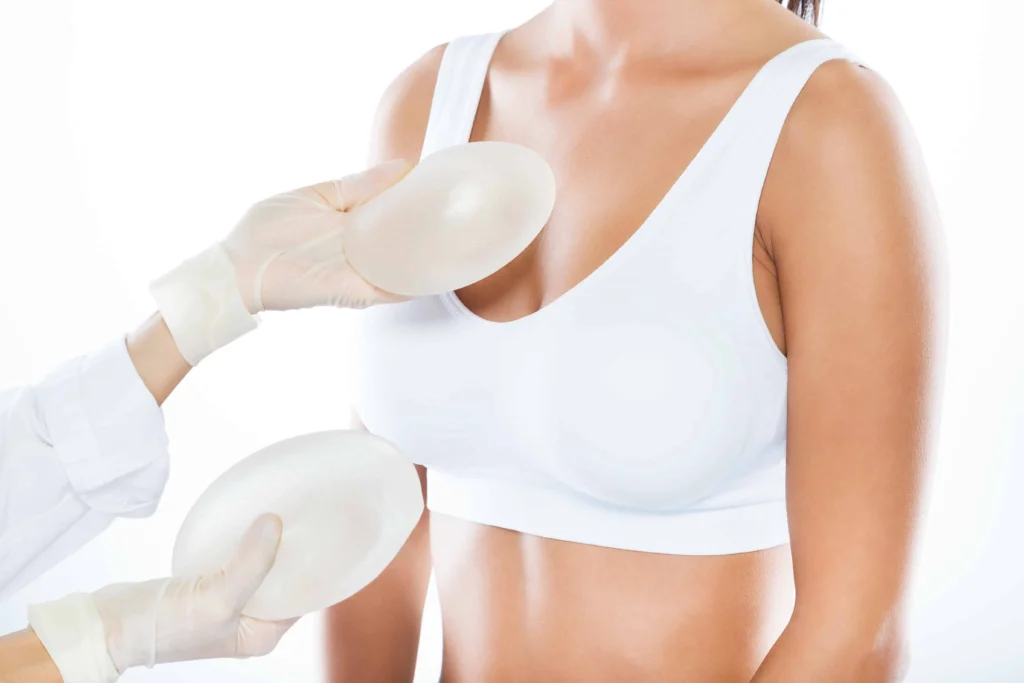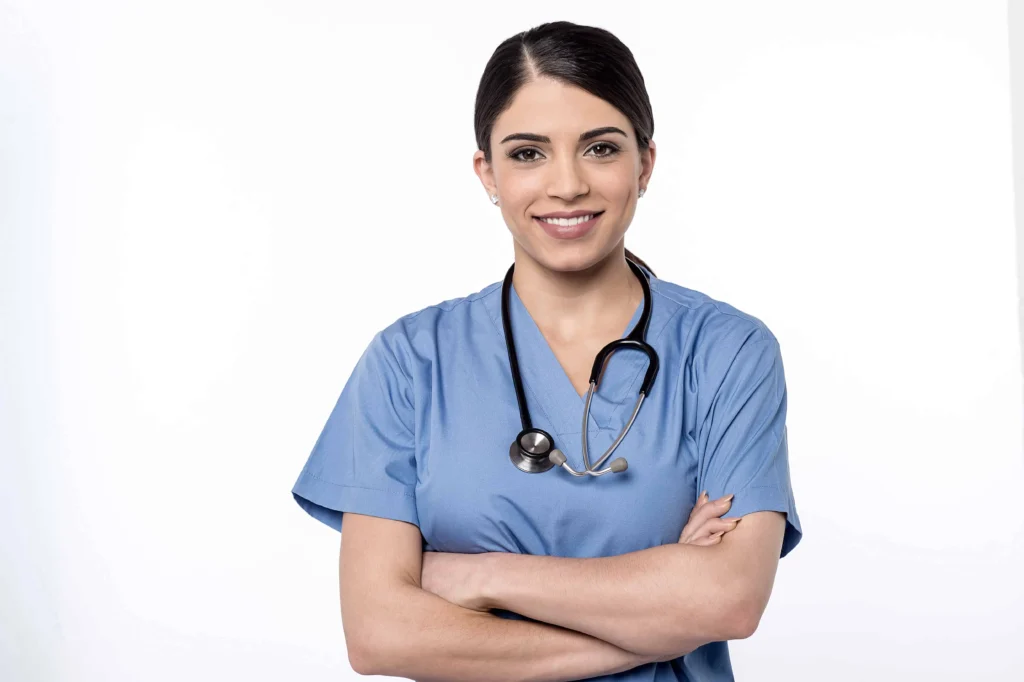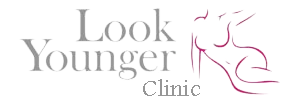Small breasts: why you have them and what to do about it
Do I have small breasts?
You may feel that you have small breasts— but with UK band sizes ranging from 26 to 64, and cup sizes spanning AA to M, breasts come in many different shapes and sizes. And it varies across nations, ethnicities, age groups, BMI etc.
Usually, when a woman considers that she has small breasts, she often means that she feels they are small for her frame. However, in rare cases, small breast size isn’t just an aesthetic matter.
Sometimes, breasts fail to develop properly for medical reasons and these causes of small breast growth are discussed in detail below.
What is a small breast size?
Breast size varies dramatically, but in the UK the smallest cup size available is AA. In terms of aesthetics, what appears ‘small’ on a broader, taller woman, would be ‘large’ on a small, slight woman.
Because the breast size is determined by the relationship between the fullest part of your breast and the measurement around your rib cage, a 38AA is actually a much bigger cup than a 32AA, for example.
That being said, having an A cup doesn’t necessarily mean you are flat chested, but due to the popularity of breast enhancement procedures, and the sometimes unrealistic “norms” that frequently appear in the media, women’s aspirations for larger breast sizes such as DD, E or an F cup have considerably grown.

Why are some women's breasts small?
Most women are genetically predisposed to having small breasts, just as they are programmed to be a certain height or weight. This is usually aesthetic, as opposed to the medical definition of post-puberty underdeveloped breasts, known as micromastia (as well as hypomastia, breast hypoplasia and mammary hypoplasia). Very rarely there is actually no breast tissue at all (amazia) or no breast tissue and no nipple or areola (amastia).
There is actually no formal definition in terms of size. This is because of the relative nature of “small breasts” – a tall woman with a given volume of breasts may have larger breasts than a more petite woman with a lower breast volume, but simply appear to have smaller breasts in relation to the rest of her body.
Congenital conditions that cause micromastia include:
- Ulnar–mammary syndrome
- Poland syndrome
- Turner syndrome
- Congenital adrenal hyperplasia
So…do I have small breasts?
Given that there is no widely accepted definition of “small breasts” in the medical literature, ultimately it’s a case of beauty being in the eye of the beholder. The answer is you only have small breasts if you think you do!
The problem occurs that what we often think of as “normal breasts” can be distorted by what we see on TV and online, which is often not an accurate representation of what is actually normal, leading many women to feel that they have small breasts compared to the average, even when they don’t.
That having been said, many women who have issues with confidence because they feel they have small breasts, do benefit psychologically from treatments that enhance the size of their breasts.

How to enhance small breasts
There are rumoured to be many ways to enhance small breasts, ranging from simple lifestyle changes to surgery. At present, there doesn’t appear to be any scientific evidence that diet changes, vitamins, supplements, lotions, massage, breast pumps, or electrical stimulation can increase breast size.
However, wearing a padded, gel-filled, or plunge bra and contouring makeup can create the effect of a fuller breast. Exercises that improve posture and target the pectoral, back, and shoulder muscles can also alter the appearance of the breasts, as may changes to the rest of the body (a slimmer waist may make the bust look larger – though in this example, often weight loss also takes volume away from breasts).
For more noticeable results, you may consider cosmetic surgery procedures with a reputable provider such as The Harley Medical Group.
Breast implants are a surgical option for women who want to increase their chest size. For this procedure, patients choose between round or teardrop-shaped implants from a wide variety of sizes in our MENTOR range.
These silicone implants are then inserted under a general anaesthetic, with surgery taking between one and two hours to complete.
At The Harley Medical Group, we use the Keller Funnel™ to introduce the implant, rather than the traditional method of the surgeon using their gloved fingers. This provides a less traumatic insertion method and means a shorter incision. Patients usually make a full recovery between four and six weeks after surgery.
If you like the idea of having bigger breasts, but not implants, then autologous breast augmentation could be the option for you. This procedure uses a woman’s own fat to increase the size of the breasts, as opposed to silicone or saline implants.
The fat is liposuctioned from another body area and injected into the breasts. Provided that the fat heals well, the breasts will look and feel normal. And the process uses tiny incisions (4-millimeters) to remove and re-inject the fat.
Combining our popular breast lift with an increase in size through implants, breast uplift and enlargement offers significant results.
Whether it’s referred to as a ‘breast uplift with implants’, a ‘breast lift/enlargement, or the medical term ‘augmented mastopexy’, this procedure provides the most dramatic results— by not only removing any excess skin, but also filling out deflated-looking breasts with an implant of the patient’s choice.

When to see a doctor
Breast changes often occur due to fluctuations in hormones during puberty, pregnancy, and menopause— as well as throughout the monthly cycle for menstruating women. While often harmless, it’s essential to consult with your doctor about any of the following:
- Lumps
- Redness, warmth, or swelling
- Pain
- Change in size, shape, or colour
- Itching and/or rashes
- Discharge
You may also wish to see a doctor if you are worried that you have underdeveloped breasts with a medical cause that may affect your ability to breastfeed etc.
How to be confident with small breasts
If you’ve got small breasts you can enjoy the benefits of not needing as much support as larger-breasted ladies. This means you can go bra free, or experiment with a wider variety of bra styles— ranging from on-trend bralettes, to padding and gel-filled options for extra volume.
You’re able to wear one-shoulder tops and very low-cut dresses without having to worry about popping out. Button-down shirts and ‘flapper’ style cocktail dresses also flatter your frame.
Small-chested women are less likely to experience such noticeable breast sagging, or breast-related neck and back pain. They benefit from being able to enjoy high-impact sport more easily than women with a larger bra size, can sleep in any position— and are even rumoured to enjoy more sensitive breasts than larger chested ladies.
Key takeaways
- Breasts come in all shapes, sizes, and orientations, as do nipples
- Cup sizes are not uniform and are calculated in relation to how broad a woman is
- Breast size doesn’t affect fertility or the ability to breastfeed
- In rare instances, certain medical conditions mean that breasts don’t develop properly during puberty.
- It’s important to speak to your doctor about any of the following: changes in size, shape, or colour, redness, warmth, itching, rashes, lumps, discharge or pain.
